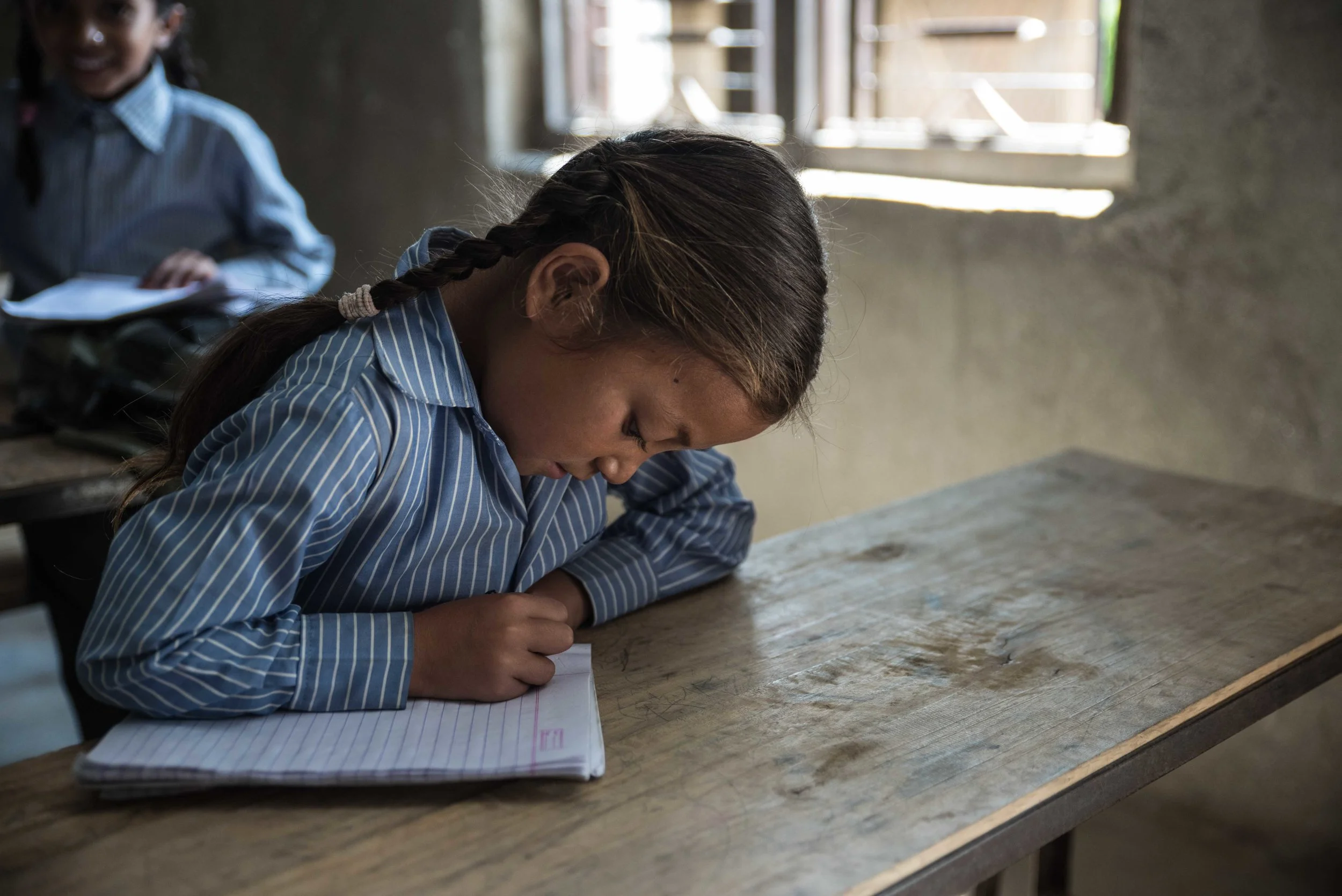The Top 10 Reasons Why Womens Education is So Important
Heba, a teacher in Palu Bari Village of Nepal.
1. Increased Literacy
Of the 163 million illiterate youth across the globe, nearly 63 percent are female. Offering all children education will improve literacy rates, pushing forward development in struggling regions. Furthermore, the staggeringly low 44.5% of literate women in Nepal will increase.
A young girl working in one of our THISWORLDEXISTS education projects in Nepal.
2. Human Trafficking
Women are most vulnerable to trafficking when they are undereducated and poor, says the United Nations Inter-Agency Project on Human Trafficking. Through providing young girls with opportunities and fundamental skills, the $32 billion annual industry can be significantly reduced. Human trafficking in Nepal is a growing criminal industry affecting multiple other countries beyond Nepal, primarily across Asia and the Middle East. Nepal is mainly a source country for men, women and children subjected to forced labor and sex trafficking.
A young girl poses outside her old school in Sorung Chhabise, Nepal. THISWORLDEXISTS are currently constructing a new facility to ensure the school can cater to all students in the area.
3. Political Representation
Across the globe, women are underrepresented as voters and restricted from political involvement. The United Nations Women’s programmes on leadership and participation suggests that civic education, training and all around empowerment will ease this gap. Despite a legislated 33% per cent required number of women in Nepali politics only 13% of ministers in the three successive governments were women.
4. Thriving Babies
According to the United Nations Girls’ Education Initiative, children of educated mothers are twice as likely to survive past the age of five. Foreign aid for schoolhouses and curriculum development could greatly benefit the East African country of Burundi, where nearly 16,000 children die per year.
128 women were receiving an education in their adulthood until the earthquakes struck Nepal and Palu Bari village. THISWORLDEXISTS will help rebuild their facility to allow them to continue their education. Find out more here.
5. Safe Sex
A girl who completes primary school is three times less likely to contract HIV. With these statistics in mind, The World Bank calls education a “window of hope” in preventing the spread of AIDS among today’s children.
Thangathai was a proud mother of her two young girls who both attend our THISWORLDEXISTS project school in Sorung Chhabise, Nepal.
6. Later Weddings
As suggested by the United Nations Population Fund, in underdeveloped countries, one in every three girls is married before reaching the age of 18. In a region where a girl receives seven or more years of education, the wedding date is delayed by four years. In Nepal, 41% of girls are married before their eighteenth birthday and 10% are married before they turn fifteen. Most of these are arranged marriages. (Perczynska, 2013)
7. Smaller Families
Increased participation in school reduces fertility rates over time. In Mali, women with secondary education or higher have an average of three children. Counterparts with no education have an average of seven children. Fertility rates in Nepal are declining, with the most recent number being 2.6 children per Nepali women. (National Demographic and Health Survey, 2011)
Mohnil is from the lowest caste in Nepal and her family does not have the money to send her to school. In THISWORLDEXISTS 2nd education phase, we work to reduce barriers like this for students to access education.
8. Income Potential
Education also empowers a woman’s wallet through boosting her earning capabilities. According to the United Nations Educational, Scientific and Cultural Organization, also known as UNESCO, a single year of primary education has shown to increase a girl’s wages later in life by 20 percent. Minimum wage in Nepal is determined to be NPR 6,100 per month ($57USD). As a result only 45.2 per cent of women as compared to 68.2 per cent of men are classified as economically active.
Before the earthquake, the Palu Bari womens adult education centre was thriving. THISWORLDEXISTS will be rebuilding the facility for the community. Find out more here.
9. Thriving GDP
Gross domestic product, better known as GDP, also soars when both girls and boys are being offered educational opportunities. When 10 percent more women attend school, GDP increases by three percent on average. Whilst Nepali GDP was growing steadily up until the recent earthquakes, it is currently $694USD/person, about half that of nearby Pakistan. (World Bank, 2016)
Education brings opportunity and skills bring a greater chance of employment.
10. Poverty Reduction
When women are provided with equal rights and equal access to education, they go on to participate in business and economic activity. Increased earning power and income combat against current and future poverty through feeding, clothing and providing for entire families.
The sustainability and progress of all regions depends on the success of women across the globe. As President Obama said while addressing the United Nations General Assembly in 2012, “The future must not belong to those who bully women. It must be shaped by girls who go to school and those who stand for a world where our daughters can live their dreams just like our sons.”
If they are active and set an example for the children and family, the future of her children would be bright. The educated women can even afford a helping hand in their own business and give her family encouragement and foster high spirits.
It is clear that access to education, especially for women is still an important issue in Nepal. The future will continue to challenge these numbers, to push them to grow and open up academic opportunities to girls, women and all of Nepal as a whole.
THISWORLDEXISTS are committed to making a difference to womens education.
Help us bring education back to the women of Palu Bari village.









